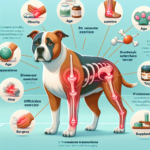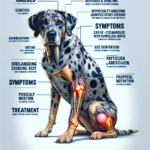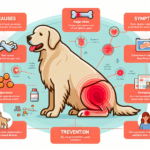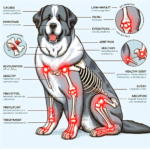Cirneco dell’Etna Joint Pain: Causes, Symptoms, Prevention, and Treatment
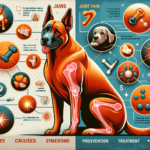
Introduction
The Cirneco dell’Etna is a small to medium-sized breed originating from Sicily, Italy. Known for its sleek, athletic build and keen hunting instincts, this ancient breed has been used for centuries to hunt small game, particularly rabbits. The Cirneco dell’Etna is characterized by its elegant appearance, with a short coat, erect ears, and a keen, alert expression. Despite its relatively small size, this breed is known for its endurance and agility, making it a favorite among hunters and dog enthusiasts alike.
Like many breeds, the Cirneco dell’Etna is prone to certain health issues. While generally a healthy breed, they can suffer from conditions such as allergies, dental problems, and joint pain. Joint health is particularly crucial for this breed due to their active lifestyle and hunting background. Ensuring the joints remain healthy is essential for maintaining their quality of life and ability to perform their natural activities.
Breed-Specific Joint Pain Risks
Genetic Predisposition
The Cirneco dell’Etna, like many purebred dogs, can be genetically predisposed to joint-related issues. While not as commonly affected by hip dysplasia as larger breeds, they can still suffer from this condition. Hip dysplasia occurs when the hip joint does not fit properly into the hip socket, leading to pain and arthritis over time. Additionally, elbow dysplasia, where the elbow joint is malformed, can also be a concern. Arthritis, a degenerative joint disease, can develop as a result of these conditions or independently as the dog ages.
Age-Related Risks
As the Cirneco dell’Etna ages, the risk of joint pain increases. Typically, signs of joint issues may start to appear in middle age, around 5-7 years old. However, this can vary depending on the individual dog’s genetics, lifestyle, and overall health. Older dogs are more prone to arthritis and other degenerative joint diseases, making regular veterinary check-ups essential for early detection and management.
Activity Level and Joint Stress
The Cirneco dell’Etna is an active and energetic breed, often involved in hunting, agility, and other high-impact activities. While their athleticism is one of their most endearing traits, it can also contribute to joint stress. Repetitive motion and high-impact activities can wear down the joints over time, leading to pain and mobility issues. It’s important for owners to balance their dog’s activity level with adequate rest and recovery to prevent overuse injuries.
Common Symptoms of Joint Pain in Cirneco dell’Etna
General Symptoms
Owners should be vigilant for common symptoms of joint pain, which can include:
- Limping: A noticeable limp or favoring one leg over another.
- Stiffness: Difficulty getting up from a lying or sitting position.
- Reluctance to Move: Hesitation or refusal to jump, run, or climb stairs.
- Decreased Activity: Reduced interest in play or exercise.
- Swelling: Visible swelling around the joints.
- Behavioral Changes: Increased irritability or signs of discomfort when touched.
Breed-Specific Symptoms
In the Cirneco dell’Etna, joint pain may manifest in specific ways due to their unique build and activity level. Owners might notice a decrease in their dog’s agility or reluctance to engage in hunting or running activities they previously enjoyed. Additionally, due to their lean physique, any swelling or changes in gait may be more noticeable compared to other breeds.
When to Consult a Vet
If any of the above symptoms are observed, it’s crucial to consult a veterinarian promptly. Early intervention can prevent further deterioration and improve the dog’s quality of life. Regular veterinary check-ups are also essential for monitoring joint health, especially as the dog ages.
Preventive Measures for Joint Health
Exercise Recommendations
Maintaining an appropriate exercise regimen is vital for the Cirneco dell’Etna. While they require regular physical activity to stay healthy, it’s important to avoid overexertion. Low-impact exercises such as walking, swimming, and controlled play are excellent for maintaining joint health without causing undue stress. Agility training can be beneficial but should be done with caution and under the guidance of a professional to prevent injury.
Dietary Suggestions
A balanced diet rich in essential nutrients is crucial for joint health. Foods high in omega-3 fatty acids, such as fish oil, can help reduce inflammation. Supplements like glucosamine and chondroitin can support joint health and repair cartilage. It’s advisable to consult with a veterinarian before adding any supplements to ensure they are appropriate for the dog’s specific needs.
Weight Management
Maintaining a healthy weight is one of the most effective ways to reduce joint stress. Excess weight puts additional pressure on the joints, exacerbating pain and increasing the risk of arthritis. Owners should monitor their dog’s weight and adjust their diet and exercise routine as needed to keep them within a healthy range.
Early Screening and Monitoring
Regular veterinary check-ups are essential for early detection of joint issues. Screening tests such as X-rays can help identify problems before they become severe. For breeds like the Cirneco dell’Etna, which may have a genetic predisposition to joint issues, early and regular screening is particularly important.
Treatment Options for Joint Pain
Non-Surgical Treatments
Non-surgical treatments are often the first line of defense against joint pain. These can include:
- Medications: Anti-inflammatory drugs and pain relievers can help manage symptoms.
- Physical Therapy: Exercises and treatments designed to improve mobility and reduce pain.
- Lifestyle Adjustments: Modifying the dog’s activity level and environment to reduce joint stress.
Surgical Options
In severe cases, surgical intervention may be necessary. Common surgical options include:
- Joint Replacement: Replacing a damaged joint with an artificial one.
- Arthroscopy: A minimally invasive procedure to clean out the joint.
- Osteotomy: Cutting and realigning bones to improve joint function.
Surgery should be considered only after thorough consultation with a veterinarian and evaluation of the dog’s overall health and quality of life.
Alternative Therapies
Alternative therapies can also be beneficial in managing joint pain. These can include:
- Acupuncture: Using needles to stimulate specific points on the body to relieve pain.
- Hydrotherapy: Water-based exercises that reduce joint stress while improving mobility.
- Massage: Therapeutic massage to relieve muscle tension and improve circulation.
Lifestyle and Management Tips
Daily Care Routine
A consistent daily care routine can help manage joint pain. This might include:
- Regular Exercise: Low-impact activities like walking or swimming.
- Balanced Diet: Nutrient-rich food and supplements to support joint health.
- Medication: Administering prescribed medications as directed by a veterinarian.
- Monitoring: Regularly checking for signs of pain or discomfort.
Modifying the Home Environment
Making the home more comfortable for a dog with joint pain can significantly improve their quality of life. Consider the following modifications:
- Ramps: Installing ramps to help the dog navigate stairs or get onto furniture.
- Orthopedic Beds: Providing supportive bedding to reduce pressure on the joints.
- Non-Slip Surfaces: Using rugs or mats to prevent slipping on hard floors.
Long-Term Management
Long-term management of joint pain involves a combination of regular veterinary care, appropriate exercise, a balanced diet, and a supportive home environment. Consistency is key to keeping the dog active and happy despite joint pain. Regular check-ups and adjustments to the care routine as needed can help manage symptoms and improve the dog’s quality of life.
FAQs About Cirneco dell’Etna and Joint Pain
What are the early signs of joint pain in a Cirneco dell’Etna?
Early signs of joint pain can include limping, stiffness, reluctance to move, and decreased activity levels. Owners should also watch for behavioral changes such as increased irritability or signs of discomfort when touched.
Can joint pain in Cirneco dell’Etna be prevented?
While it may not be entirely preventable, joint pain can be managed and minimized through regular exercise, a balanced diet, weight management, and early screening. Preventive measures can help maintain joint health and reduce the risk of severe issues.
Are there specific exercises that are better for Cirneco dell’Etna with joint pain?
Low-impact exercises such as walking and swimming are ideal for dogs with joint pain. These activities help maintain mobility and muscle strength without putting excessive stress on the joints.
What dietary supplements are recommended for joint health in Cirneco dell’Etna?
Supplements such as glucosamine, chondroitin, and omega-3 fatty acids can support joint health. It’s important to consult with a veterinarian before adding any supplements to ensure they are appropriate for the dog’s specific needs.
When should I consider surgery for my dog’s joint pain?
Surgery should be considered when non-surgical treatments are no longer effective, and the dog’s quality of life is significantly impacted. A thorough consultation with a veterinarian is essential to evaluate the best course of action.
Conclusion
Joint health is a critical aspect of caring for a Cirneco dell’Etna. By understanding the breed-specific risks, recognizing early symptoms, and implementing preventive measures, owners can help ensure their dog remains active and healthy. Regular veterinary check-ups, a balanced diet, appropriate exercise, and a supportive home environment are key to managing joint pain. By taking these steps, owners can provide their Cirneco dell’Etna with the best possible quality of life.

